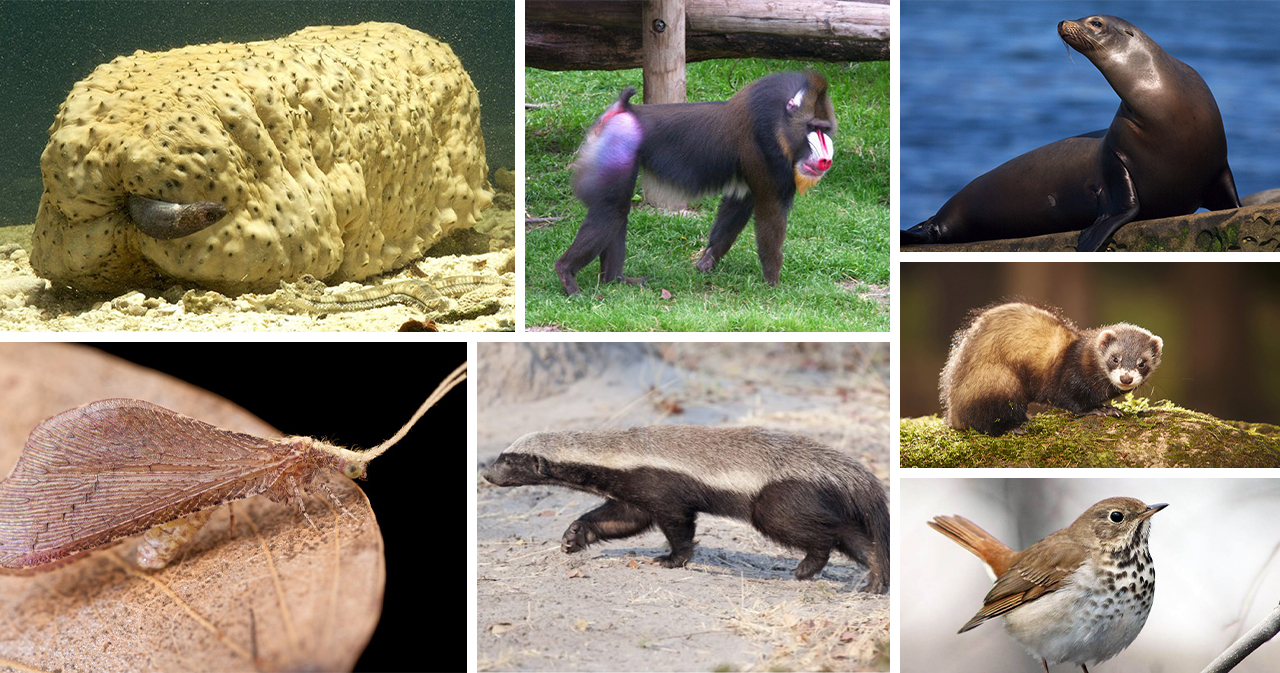A zoologist explains animals’ farts and butts
Butts and farts may sound funny or unpleasant but you may not know they are not all the same, especially when we look into the animal world where you can find out a lot of diversity compared to humans.
Dani Rabaiotti is a zoologist based in London who wrote a best-selling book on farts in 2017 called Does it Fart? She and her co-author, ecologist Nick Caruso, along with illustrator Ethan Kocak, followed the tracks of animal communication science that are undercovered. In an interview, she shared some of her most memorable farts and butts discoveries.
When she was asked a definition of butt, she answered that it’s quite hard because not all animals have a butt as we normally intend, since it consists of buttocks and anus but not all animals have buttocks and anus. Plenty of animals have a cloaca where urine and feces go together, such as birds, reptiles, amphibians, etc… They all have just one hole but there are so many variations between animals. For example, sea cucumbers can have teeth in their butt because there’s an animal called pearlfish that lives inside its butt to eat their gonads and respiratory tree, so the sea cucumber uses teeth to protect its butt.
Other animals instead, use their butt to attract a mate, such as baboons which have bright blue bums. So, there are just all sorts of weird and wonderful butt anatomies out there: ornamented, pretty gross, or just like basically completely nondescript unnoticeable butts as well but there’s always a good reason for that. Humans, for example, ended up evolving buttocks because we walk on two legs and sit down a lot, so a bony butt would be too uncomfortable.
Talking about farts, however, the zoologist said that it was a challenge also define them because the definition of fart implies the presence of an anus which not every animal has. Moreover, not every fart has the same combination of gases. We, for example, do fewer farts than cows because we don’t eat grass which produces more methane due to cellulose. Carnivores, instead, produce less gas but it’s different and smells worse because there’s sulfur in the meat they eat which makes farts smell like a rotten egg.
Rabaiotti then explained that the worst farts come from seals and sea lions, confirmed by zookeepers as well: the smell is like a mix of rotten fish and rotten eggs. That’s because they usually eat fish and crabs.
A peculiarity of farting in the animal world is that they don’t feel embarrassed when they do them as people do, but curiously, ferrets seem to get scared by their own farts.
All farts are normally not toxic but being mostly composed of methane, are bad for climate change. However, there’s an insect, the beaded lacewing that when it farts produces allomone, a chemical that only affects one species: the termites. So, when a beaded lacewing farts allomone out onto termites, they get paralyzed and can be eaten by the insect. In this case, farts are toxic.
Despite there are many interesting discoveries about animal farts and their poo, Rabaiotti reports that most of the research is looking at other questions, for example, the animal diet which unintentionally talks briefly about farts and poo but never in specific. And it was harder to find out something about farts related to, for example, invertebrates because they aren’t cute and fluffy like other animals in which you tend to be interested.
She then goes on to explain that there are also a lot of myths and legends surrounding animals like honey badgers, mongooses, and other kinds of mustelids: for example, how they subdue bees when they eat them. People also say this about a species of thrush in the US, that farts on the ground to subdue worms but she’s 99% sure that these things are not true. But it’s really hard to definitively confirm that because no one goes and tests. So, Rabaiotti would like to see more people going and validating these reports because the honey badgers farting on bees were in a field guide and the thrush farting on the worms was in a really old scientific observation.
It must be said that animals have some amazing uses for their butts. And other animals have some amazing uses for other animals’ butts, like living inside them, or using them as a defense (so many animals have white tails which they put in the air as a warning sign to others). Butts are completely underrated and no one should ever shy away from doing research that involves butts because there’s just a whole wide world out there of animal communication that revolves around butts. People will want to read a book about butts or about farts and by doing that they’ll learn.
Source massivesci.com

